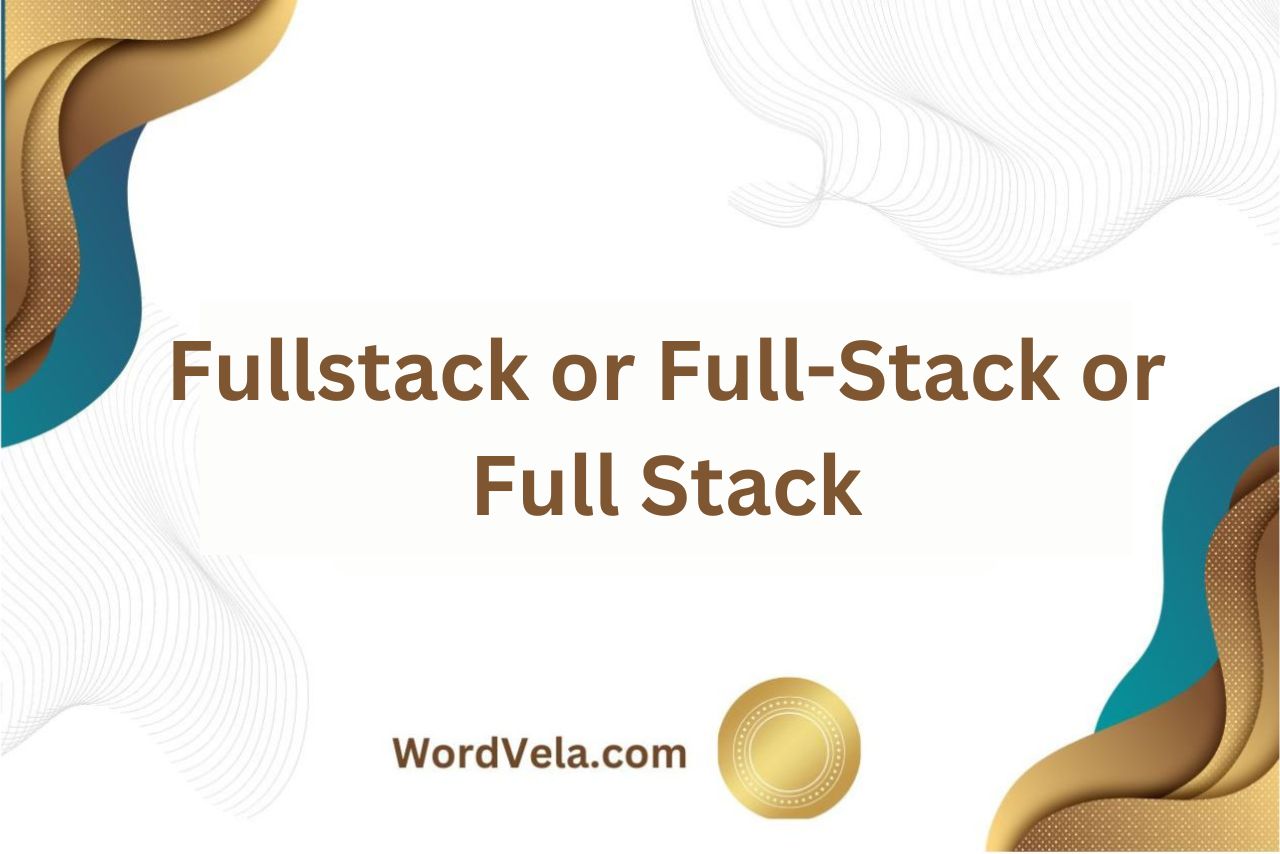Fullstack or Full-Stack or Full Stack: If you’ve ever found yourself puzzled over whether it’s “fullstack,” “full-stack,” or “full stack” when referring to a developer with skills across the front and back end of web development, you’re not alone.
The correct usage actually depends on context and style guides, but in general, “full stack” without a hyphen is commonly accepted in the tech industry.
Differentiating between these variations can impact how your expertise is perceived within the programming community and even affect search engine optimization strategies for your online presence.
Table of Contents
Fullstack or Full-Stack or Full Stack:
All three variations you mentioned – fullstack, Full-Stack, and Full Stack – are acceptable, but with slight differences in usage:
Full Stack:
Full Stack refers to the entire process of developing an application, encompassing both the front-end (what users see and interact with) and the back-end (server-side logic and data management).
Front-End Development
Back-End Development
Full-Stack or Full Stack:
| Feature | Full-Stack | Full Stack |
|---|---|---|
| Common Usage | More Common (informal) | More Formal |
| Context | Text, Code, URLs | Titles, Headings, Professional |
What Is Full-Stack:
Full-Stack, in the world of software development, refers to the complete development process of an application. It encompasses everything from what users see and interact with (the front-end) to the behind-the-scenes logic and data storage (the back-end).
Full-Stack Developers:
Is It Fullstack Engineer or Full Stack Engineer?
| Feature | Fullstack Engineer | Full Stack Engineer |
|---|---|---|
| Prevalence | Less Common | More Common |
| Formality | Informal | More Formal |
| Context | Often seen in casual settings or online discussions | Preferred in professional settings, titles, and headings |
What Do I Need Full-stack?
To become a Full-Stack developer, you’ll need to develop a well-rounded skillset encompassing both front-end and back-end development.
Here’s a breakdown of the key areas you’ll need to focus on:
Is Full Stack Engineer Good?
Yes, Full Stack Engineering can be a very good career choice, here’s why:
High Demand and Job Security:
Well-Paying Jobs:
Diverse and Fulfilling Work:
Is MERN Full Stack?
Yes, MERN can be considered a Full-Stack development approach. Here’s why:
MERN Stack:
Stands for MongoDB (database), Express.js (back-end framework), React.js (front-end framework), and Node.js (JavaScript runtime environment).
It provides a collection of technologies that cover all the essential layers of a web application:
Is Full stack Better than Backend?
Whether Full Stack development is “better” than Back-End development depends on your interests and career goals.
Here’s a breakdown to help you decide:
Full Stack Development:
Pros:
Cons:
Is Full Stack Need Coding?
Absolutely! Full-stack development is all about coding. It requires a strong foundation in various coding languages and technologies to build both the front-end (user interface) and back-end (server-side logic) of an application.
Here’s why coding is essential for Full-Stack development:
Conclusion and Final Thoughts!
“Full stack” is the correct terminology to use when referring to a developer with skills across both front-end and back-end technologies.
The hyphenated and spaced variations are commonly used but not grammatically accurate. Consistency in language usage is crucial for effective communication within the tech industry, so sticking to “full stack” as two separate words is recommended.
By understanding the nuances of these terms, developers can better position themselves in the job market and ensure clarity in their skillset descriptions.
Embracing “full stack” as the standard phrasing will not only demonstrate linguistic precision but also showcase professionalism and expertise among peers and potential employers alike.
Latest Posts!
- 9 Proper Ways to Sign a Letter on Behalf of Someone Else!
- Do You Put a Comma After Yesterday? Here Defined:
- 12 Professional Ways to Say I Will Keep You Posted!
- 10 Other Ways to Say Well Received in An Email!
- 12 Other Ways to Say Thank You for Your Attention!
- Secretary’s or Secretaries’ or Secretaries? Which Is Correct?











Leave a Reply